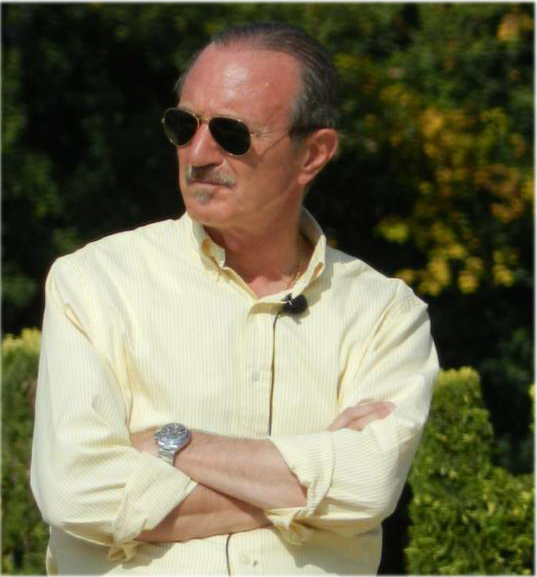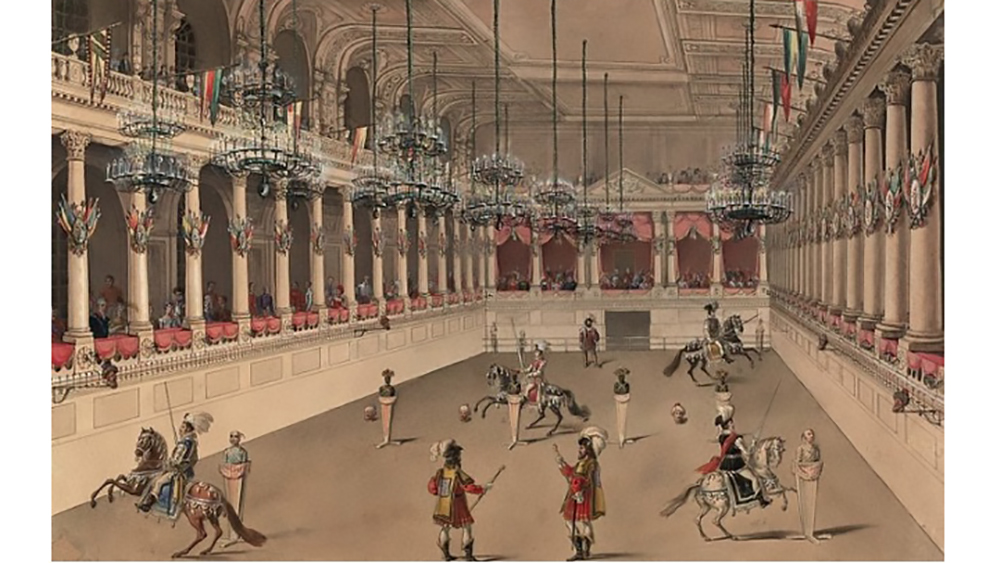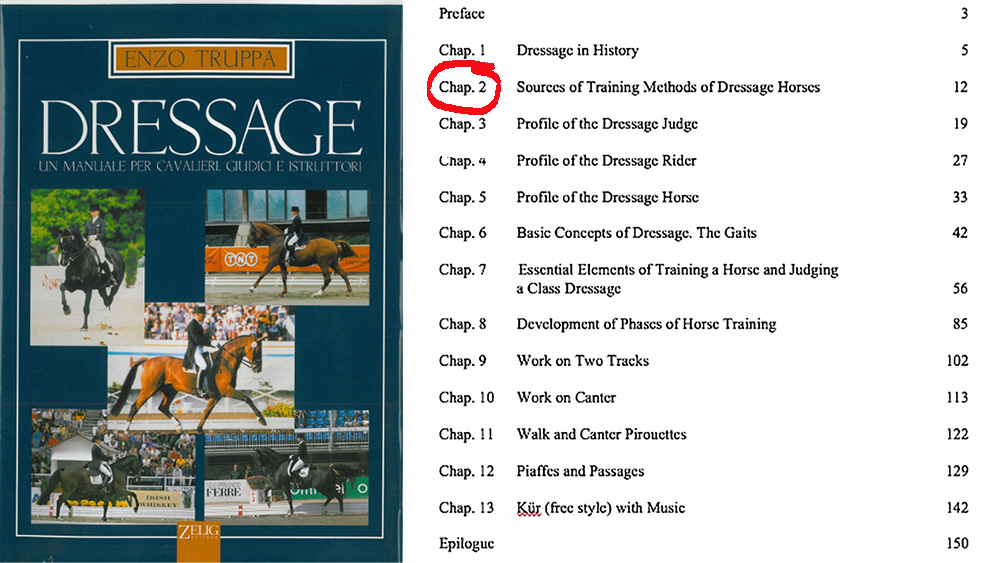
When discussing the training of a dressage horse, as we saw in the brief historical review presented previously, we must refer to the sources on which it is based, or to the methods it follows and refers to in conducting the training. The classical art of dressage, practiced internationally today, is substantially based on the methods taught at the Spanish Riding School of Vienna, that in turn were based on the teachings of De La Guérinière. Unfortunately, apart from the work of De La Guérinière, these methods developed by the Spanish Riding School of Vienna were based exclusively on oral traditions, and the few written notes that exist are certainly incomplete.
The most important point of reference of these methods available to us is included in the Directives published by Von Holbein in 1898.
Although these Directives provide general indications, they in any event reveal the author’s extraordinary knowledge of the training methods used at the School.
Following the path indicated by these Directives, for those who wish to deepen their knowledge, some good sources to study are the book by De La Guérinière of 1751, that of Max Ritter Von Weyrother of 1814, that of Luis Seeger of 1844, but above all, the book by Steinbrecht we have already cited multiple times, Das Gymnasium des Pferdes.

We will provide here a brief description of these books and their authors, starting with François Robichon De La Guérinière, whose importance has already been amply mentioned. De La Guérinière was the head trainer under Louis XIV in France. We find the first mentions of him in 1716, when he became the director of the famous Equestrian Academy of Paris, that before him had been directed by his teacher François Ann De Vendeuil. From 1730 until his death in 1751, De La Guérinière directed the royal stables of Tuileries, founded by Pluvinel (the teacher of Louis XIII) approximately one hundred years earlier. De La Guérinière’s book “Ecole de Cavalerie” was published for the first time in 1733, and re-published in the years between 1740 and 1802 under various titles.
Thanks to the clarity and importance of the methods described there, this text was adopted by Von Holbein as the basis for the training methods used at the Spanish Riding School of Vienna.
In the introduction, De La Guérinière asserts that his book is not aimed at promoting his ideas and methods, but explaining that his technical knowledge is also based on the study of books published by the best authors of the period; their teachings were then supplemented with what he had learned based on his own experience, and what had been transmitted to him by his teacher De Vendeuil, and even more so, by his predecessors Du Plessis and De La Vallée.
The book Ecole de Cavalerie consists of three chapters:
1- Knowledge of the horse inside and outside of the stable;
2- Training methods;
3- Treatment of diseases.
This classification clearly shows the scope of knowledge that was expected of a rider at the time, that in my view, should in some ways also apply to riders today.
De La Guérinière’s goal was to obtain, through systematic work, a horse that is ultimately relaxed, obedient, showing pleasant movements and comfortable to ride. Those characteristics fit perfectly with the concept of “HAPPY ATHLETE,” integral part of in the FEI Regulations.
Max Ritter Von Weyrother was certainly the most prestigious rider in a family of exceptional riders. He arrived at the Spanish Riding School of Vienna in 1813 and became the head trainer in 1825. He died in 1833. In 1814, Weyrother published a little book entitled How to Select a Mouthpiece. After his death, a book was published in 1836 with the title Extract of Quotes collected by friends of Max Ritter Von Weyrother. These extracts give an idea of this man’s reputation, and demonstrate (which was remarkable for that time) that he had been asked to prepare a training plan for the Austro-Hungarian Riding School. This little book contains the training principles used at the Spanish Riding School of Vienna until present times, which is the demonstration of the quality of his teaching and the legacy that he left to the “Bereiter” (head trainers) who succeeded him. As we have seen, Weyrother closely followed the teachings of De La Guérinière, and in the work we cited above, principally dealt with the rider. He is the one who coined the phrase “thinking rider” that is still used at the Spanish Riding School of Vienna, a concept we will address in a chapter dedicated to the profile of the dressage rider, that stresses the need to support practical abilities with adequate theoretical knowledge.

His reputation extended beyond the borders of Austria, as demonstrated by the text published by the German Baron Biel in 1830 entitled The Noble Horse. Biel was very critical of the fact that the equitation methods used in Germany at that time were based on horses that were excessively closed in front, with an unnatural attitude; only by visiting the Spanish Riding School of Vienna, and thanks to the head trainer Weyrother, had he discovered and appreciated some very different training methods. He thus expressed the hope that every breeder could have the good fortune of having his horses trained with these principles.
Louis Seeger opened his first private equitation school in Berlin, and in 1844 published his book System of Horsemanship, for which he received a gold medal at the time. In 1852, he also published Monsieur Baucher and His Methods, that essentially represented a severe warning to German riders about using Baucher’s methods, expressing his opinion on the harm that could derive from their application. Seeger was a student of Max Ritter Von Weyrother, and his systems were completely influenced by his teacher and in line with the principles taught at the Spanish Riding School of Vienna. According to those principles, a horse, even if trained up to the Grand Prix level, must be perfectly usable for other purposes as well.
In the System of Horsemanship the reader will find constant references to the extracts of Weyrother, supplemented by the author’s experiences and explained even more in detail. Thus it can be stated that this book contains the teachings of De La Guérinière and Weyrother in a methodical sequence, in addition to the space dedicated to the laws of balance and the proof of his theories through the laws of physics.
Unlike his contemporaries, Seeger wrote a book that was truly simple, which contains information that is still very useful today.
Another important reference to the training methods used at the Spanish Riding School of Vienna is given by Von Holbein in his Instructions for the Austrian Cavalry; those principles coincide almost completely with the books of Weyrother and Seeger. If we compare his Instructions, published between 1873 and 1898, with the books of the other authors, we find almost no differences, except for in some expressions of little account. Indeed, the 1898 edition was subsequently used by the Cavalry in Austria until 1938. Considered properly, Von Holbein certainly has the merit of being the first to translate into a written work the horse training instructions for the Spanish Riding School of Vienna, which as we saw before, were previously only passed down orally. He published these directives in 1898, and was named the Director of the School that same year, a position he held until October 1901. In the introduction to his directives, Von Holbein stresses the fact that, when the time available to train a horse is shortened – and this universal tendency to accelerate training was becoming increasingly pressing – this cannot but cause a decline in the art of equestrianism, which at the time could be seen in the various armies that still practiced equestrian activities.

Let us see what the principles of the Spanish Riding School of Vienna were.
Horsemanship is based on three different phases of training, each of which has a vital role.
Phase 1: ride the horse with a natural gait, on straight lines, in ordinary paces, with free movements full of impulse, with contact through the reins and also with long reins. This was defined as riding forward and could be an end in itself.
Phase 2: ride the horse in collection, in circles and in turns, at all paces and with perfect balance. This improves the horse’s natural impulse, makes his gaits progress positively, strengthens his muscles, and most importantly, makes his joints flexible and decontracted. The horse’s ability to execute dressage figures and his balance both increase, while his ability to learn and his intelligence will be reawakened.
This second phase of training must be developed after the first phase has been completed, and is the only possible preparation for the third phase, called “High School.” According to these principles, it is only this progression that will allow the rider to one day access the temple of the art where the High School resides.
Phase 3: ride the horse in high collection with regularity, decontracted and a more developed bending of the joints, as well as a greater engagement of the quarters in all of the paces. This phase cannot exist without the first two, and indeed it is affected by the results of the use of the methods in all three phases.
It is appropriately specified that each rider of the “School” must know exactly which phase of training his horse is in at a certain time, and thus which methods must be used in the training he will give and what goal is to be reached. Each rider must not only be able to ride correctly , but must also “think,” since only a “thinking rider” will be able to reach his goal in a relatively reasonable period of time, without spoiling the horse.
In conclusion, Von Holbein states in his Directives, that the art of equestrianism must be removed from the nebula of mystery and made true and easy to apply in its simplicity.
For Chapter 1 CLICK HERE




